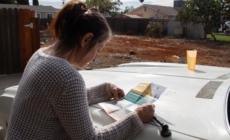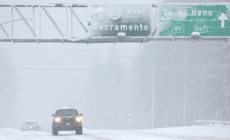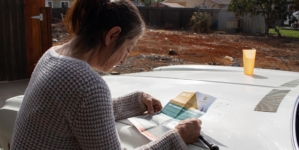-
David Rivera Charged With Lobbying for Sanctioned Venezuelan Tycoon - 28 mins ago
-
What’s Inside the Spending Bill to Avoid a Government Shutdown? - 40 mins ago
-
Many Black women feel disheartened, betrayed by Kamala Harris’ loss - 43 mins ago
-
Why ‘Family Feud’ Fans Are Roasting the Show - about 1 hour ago
-
The Wrath of Trump: House Republicans Map a Case Against Liz Cheney - about 1 hour ago
-
Nolan Arenado Blocks Trade To Perennial American League Contender: Report - 2 hours ago
-
Summer X Games are leaving Southern California, headed to Sacramento - 2 hours ago
-
Florida Charges Man Suspected of Trump Assassination Plot - 2 hours ago
-
Pardoning Oath Keepers Leader Stewart Rhodes Would Be ‘Frightening’: Judge - 2 hours ago
-
FBI agents search home of L.A. deputy mayor over City Hall bomb threat - 3 hours ago
Black, Latino families reach tentative settlement with Palm Springs

The Black and Latino families whose Palm Springs homes were razed and burned in a brutal urban renewal project in the 1950s and 1960s have tentatively agreed to a $5.9 million settlement, the city announced Wednesday.
Decades after city employees and the Fire Department destroyed an estimated 197 homes on tribal land in downtown Palm Springs, the settlement package aims to address historical injustices for the families of Section 14, as the area is known, and their descendants, the city said.
The city council will vote tonight on the settlement offer, which includes compensation based on the current value of personal property lost by verified former Section 14 residents and their families.
In addition to the settlement, the council will also consider funding broader programs intended to address longstanding economic disparities in the desert city, including $20 million for housing initiatives and $1 million for local business initiatives for marginalized communities. While the programs are intended for the entire Palm Springs community, the city said it would target outreach to Section 14 families.
Mayor Jeffrey Bernstein said the city council is “deeply gratified” that the former residents of Section 14 have agreed to accept the settlement offer.
“The City Council has always respected the historical significance of Section 14,” he said in a statement. The resolution of the claim, Bernstein said, “will create lasting benefits for our entire community while providing programs that prioritize support for the the former residents of Section 14.”
The city apologized for its actions surrounding the displacement of the neighborhood in 2021, and discussions regarding reparations have continued for several years.
Areva Martin, a lawyer representing the Section 14 residents and their descendants, did not respond to requests for comment Thursday morning. “The fact that we got this over the finish line is remarkable given the headwinds that we faced,” Martin told the Associated Press.
Section 14, a one-square-mile tract, is located in the center of the Agua Caliente Band of Cahuilla Indians Reservation. The Agua Caliente were unable to develop their land until the late 1950s due to federal laws, according to the city, so tribal landowners leased plots to Black and Latino workers who were excluded from much of the rest of the city by racist real estate covenants and lending practices.
The area had limited water and electrical service and no gas lines, sewers, garbage pickup or paved roads, according to a historical study prepared by the Architectural Resources Group last month for the city council. As early as the 1930s, county, state and federal officials were raising concerns about substandard living conditions in Section 14, the study found.
But amid an affordable housing crisis in the city, Section 14 was centrally located and affordable on a working-class paycheck, and so it became home to the chefs, chauffeurs and maids who contributed to the development of Palm Springs’ vibrant hospitality industry. It eventually grew into a thriving community with homes, mobile homes, restaurants and churches, according to the nonprofit Section 14 Survivors.
The California Housing Authority and the Riverside County Department of Health instructed the city of Palm Springs to remove the makeshift, substandard homes in Section 14 in 1951, and eviction notices began going out to residents, according to the city. The city worked to relocate Section 14 residents and ensure they would have housing following their impending evictions but, as one city document notes, not all efforts were successful.
When federal legislators eased tribal land restrictions in 1959, allowing for 99-year leases, the city and tribal land owners had an opportunity to address health concerns in the area — and cash in on the land.
Multiple government agencies displaced and evicted Section 14 residents over at least five major abatement campaigns between 1936 and 1965, with the city’s direct involvement beginning in 1948, according to the historical study.
A state probe in 1968 determined that the city acted without giving residents in Section 14 the required notice that they were being evicted before the homes were destroyed. State officials at the time referred to Palm Springs’ actions as a “city-engineered holocaust,” but did not find the city criminally liable.
Gov. Gavin Newsom in September signed a formal apology for California’s role in slavery and its legacy of racism against Black people, but overall the state’s work to deliver reparations has moved incrementally.
This article is part of The Times’ equity reporting initiative, funded by the James Irvine Foundation, exploring the challenges facing low-income workers and the efforts being made to address California’s economic divide.
Source link



















